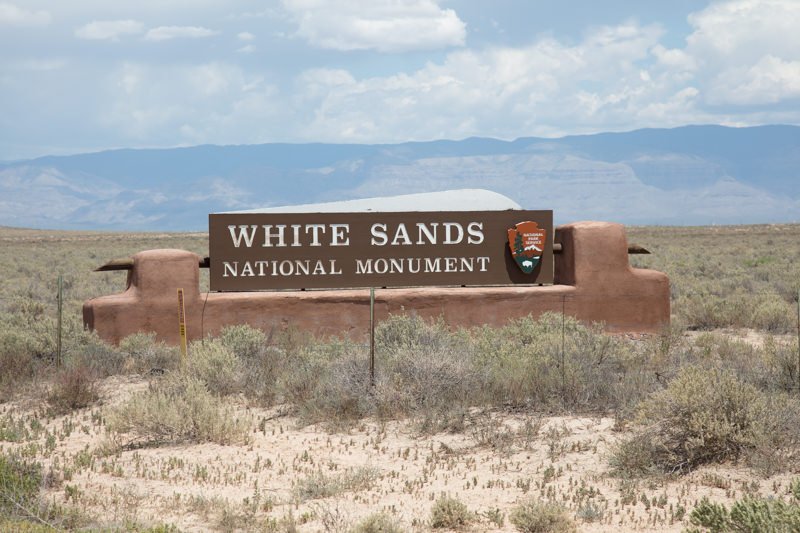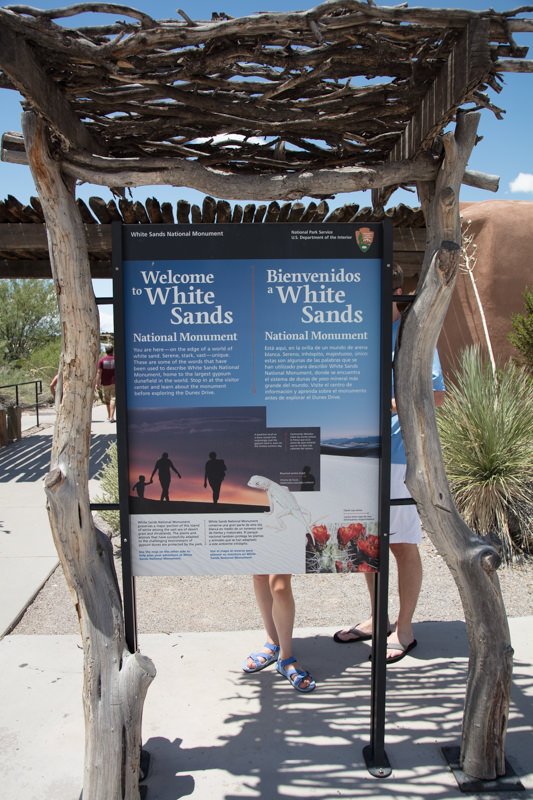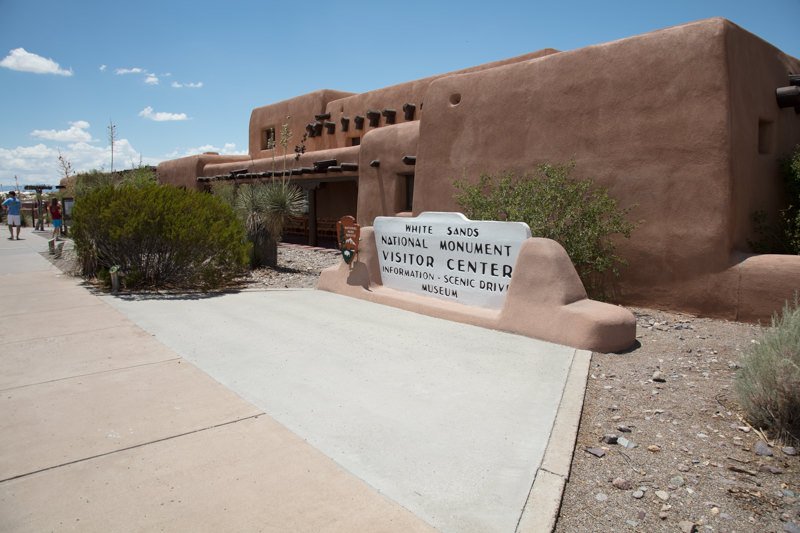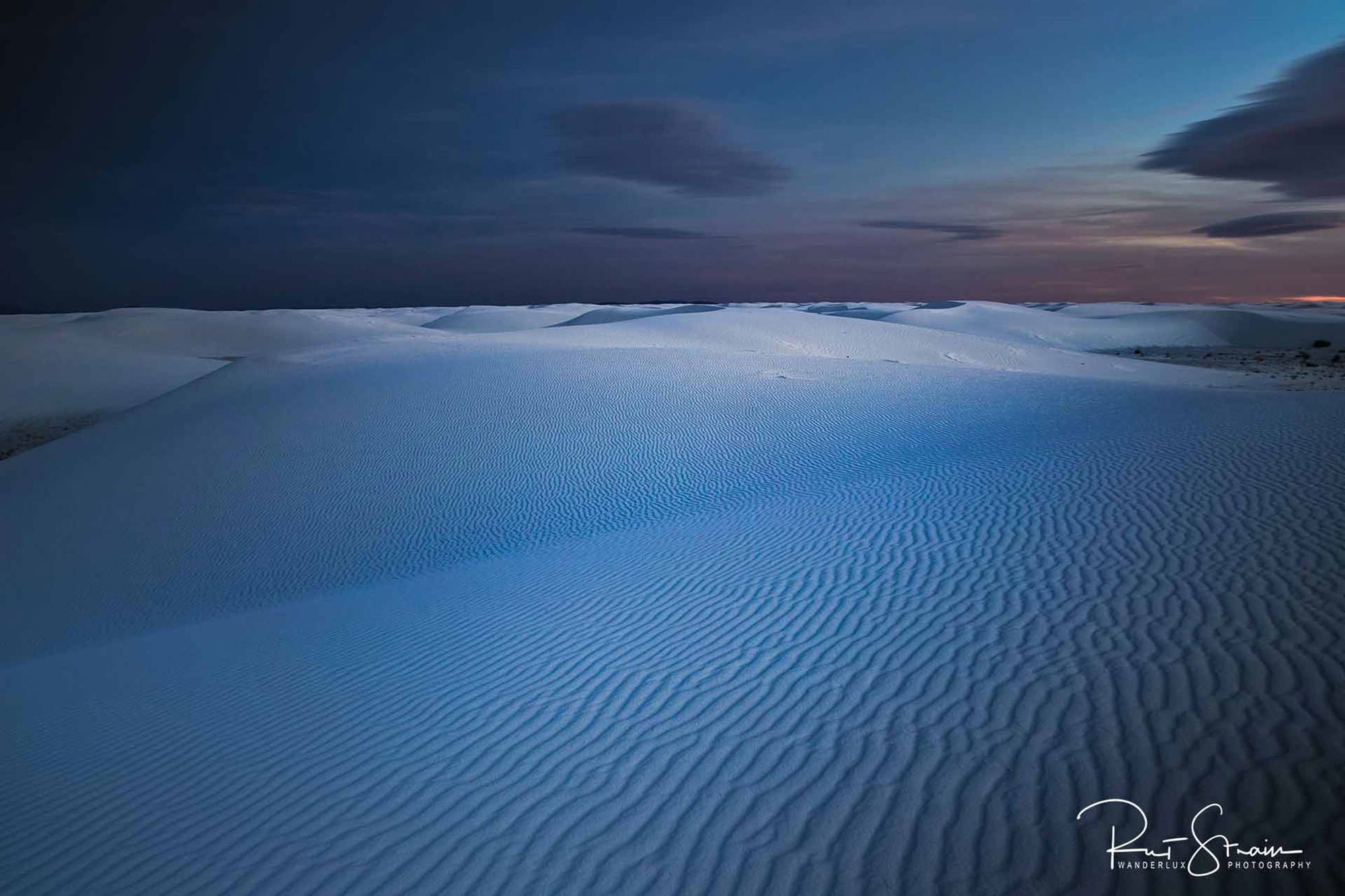White Sands
Southern New Mexico
WHITE SANDS
A BRIEF SUMMARY OF WHITE SANDS
White Sands - the slogan for White Sands is “Like No Place Else on Earth.” After visiting there several times, I would agree.
White sands is located in south central New Mexico and covers approximately 275 square miles of what seems to be endless white dunes. When you first arrive, it feels like you are on another planet: strange and truly magical. Ironically, the endless white dunes are not sand at all; they are made up of gypsum. Regardless, they provide truly out-of-this world landscapes and makes White Sands a photographer’s paradise.
It’s worth noting, if you are hoping that White Sands will provide enormous contiguous dunes with stacks and stacks of interesting shapes that just happen to be white, you will be disappointed. White Sands does provide interesting shapes of white sand (gypsum), but the dunes are not very tall (20-40ft.) and most dunes are in rows with gaps/valleys between each row. I am not saying this is bad, just different than the dunes of Death Valley or Great Sand Dunes National Park in Colorado.
Image by Davide Nguyen @ www.davidnguyenphotos.com and location summary by Tim Wier
Annual Subscription
Lifetime Membership
DATA POINTS INCLUDED WITH WHITE SANDS SUMMARY
I would rate the difficulty of this trail as a 3 on a scale of 1-5 (with 5 being most difficult). To get to best places to shoot, you will need to hike 1-4 miles deep into the White Sands. This can very taxing and it is easy to get lost and/or disorientated in these dunes, and there are very few landmarks. I would highly suggest taking a GPS to make sure you can navigate your hike to a from the parking lot/campsites.
What makes White Sands unique is the color of the sand (it is really gypsum not quartz sand), which is intriguing. The contrasting white dunes with the mountains, sky, and plants can create surreal photographic opportunities.
That being said, the dunes at White Sands are challenging to photograph for the following reasons: 1) They are not very tall (20-40ft. for most), 2) Most dunes have gaps between rows, so you won’t find a classic stack of dunes layered into the sunset, 3) You don’t find as many S shapes in the formations, and 4) Unless you get deep into the dunes, you will find footprints everywhere.
Another challenge is much of the park has cactus (yucca plant) and other vegetation growing in the dunes. So if you are looking for a flowing, layered abstract, you will need to scout deep into the dunes.
The dunes at White Sands are not very high compared to other dunes in the country. Bring lenses that range from ultra wide to short telephoto.
3,972 Ft. Elevation
Other Resources Available with Membership
KMZ Trail File
Directions
Best Time of Day to Shoot
Best Time of Year to Shoot
Equipment Needed
Permits Required
Direction of Shot
Google Maps Birds-Eye-View
Number of Photographers to Expect
Cell Service
Overnight Lodging/Camping
Nearby Restaurants
Area Guides and Workshops
Other Resources














